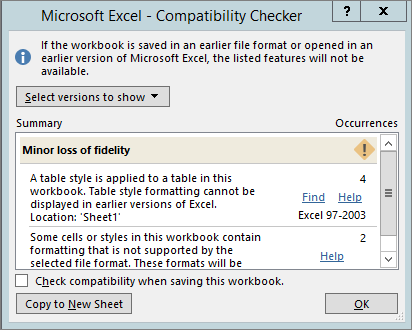

- 2019 LATEST VERSION OF EXCEL SOFTWARE LICENSE
- 2019 LATEST VERSION OF EXCEL SOFTWARE
- 2019 LATEST VERSION OF EXCEL CODE
- 2019 LATEST VERSION OF EXCEL LICENSE
- 2019 LATEST VERSION OF EXCEL PLUS
result now contains a list of license names with the same format as `cscript OSPP.Excel for Microsoft 365 Excel 2021 Excel 2019 Excel 2016 Excel 2013 Excel 2010 Excel 2007 Excel Starter 2010 More. Note: OSPP.VBS uses = instead of NULL AND PartialProductKey \"\"" This constant is apparently the same for all Office versions:Ĭonst string officeAppId = "0ff1ce15-a989-479d-af46-f275c6370663" - Office 15, OfficeStandardVL_MAK edition

- Office 16, Office16O365ProPlusR_Subscription1 edition - Office 19, Office19Standard2019VL_KMS_Client_AE edition - Office 16, Office16StandardVL_MAK edition when it executes the /dstatus command. Instead of executing cscript OSPP.VBS /dstatus, it's possible to get the same information by implementing the WMI queries used by OSPP.VBS ourselves (here in C#): // Implementation is based on the OSPP.VBS file in the Office directory, To expand the answers already given, it looks like OSPP.VBS is sadly the sanest way to get the info we need to differentiate between Office 2016, 2019, and 365. The versions with 2013, 2016, and 2019 each work versus all three versions.It will fail if the target system is in need of a restart.It does not need to be run as elevated for this purpose.It does not require MS Office to be installed to the system it is run from.It is included in the folder stored in the Application.Path property.If %2_=_ (set MSO_PKG=ProPlus) else (set MSO_PKG=%2) Setlocal ENABLEEXTENSIONS ENABLEDELAYEDEXPANSION

:: * If the package is unlicensed, print an empty off :: string using the MS Office Application.Version property format.

:: * If the package is licensed, print the MS Office package version
2019 LATEST VERSION OF EXCEL PLUS
:: * ProPlus - Office Professional Plus (default) :: PackageAbbr - Package abbreviation (list below is not exhaustive) :: ComputerName - Windows system name (defaults to local system) :: * SLERROR.XML - Data file for OSPP.VBS.
2019 LATEST VERSION OF EXCEL SOFTWARE
:: * OSPP.VBS - MS Office Software Protection Platform script. :: Copy this cmd script to a folder including these MS Office files: Here is a sample CMD script that demonstrates the workaround: :: GetOfficeVer.cmd - Print the version of a licensed MS Office package.
2019 LATEST VERSION OF EXCEL SOFTWARE LICENSE
Is there an alternate way to programmatically distinguish Office 2016 from Office 2019?Ī workaround is to parse the version number from output of the MS Office Client Software License Management Tool, OSPP.VBS, run with the /dstatus option. That is just not right! The 20 feature sets are clearly distinct, so they should not be lumped together: Recently, though, I was surprised to find that it also reports 16.0 for Office 2019. Since then, it reports 15.0 for Office 2013, and 16.0 for Office 2016. The diagnostic faithfully reports MS Office versions consistent with the post from 2011. Wscript.Echo "Excel Version: " & excelApp.Version Set excelApp = CreateObject("Excel.Application") Here is a VB Script that diagnoses which, if any, version of Excel is installed to the system: On Error Resume Next
2019 LATEST VERSION OF EXCEL CODE
Doug Glancy directly addressed the question with VB code that prints the version property of Excel Application object: For instance, the number 14.0 corresponded to Office 2010. Mathieu's reply, the accepted answer, correlated numbers used to identify MS Office in the registry versus the product versions. Identifying Excel version programmatically But now I find that it incorrectly reports MS Office 2019 applications as MS Office 2016.Įight years ago, M. It has worked correctly for MS Office versions 2003, 2007, 2010, 2013, and 2016. I maintain a diagnostic that programmatically determines the version of MS Office applications, including Excel and Word.


 0 kommentar(er)
0 kommentar(er)
